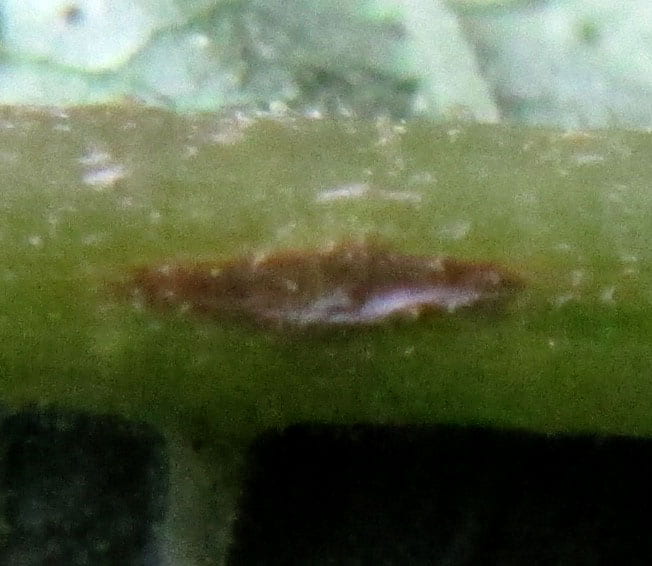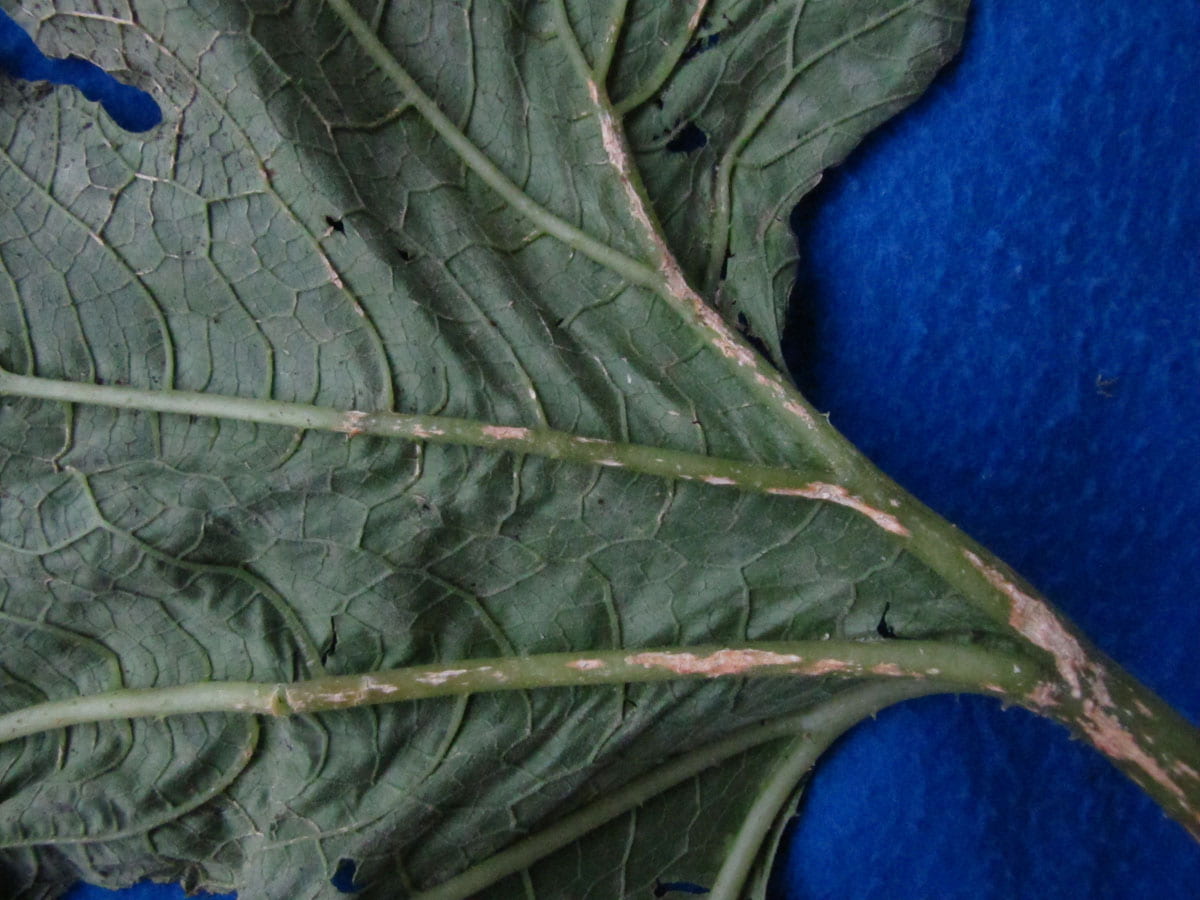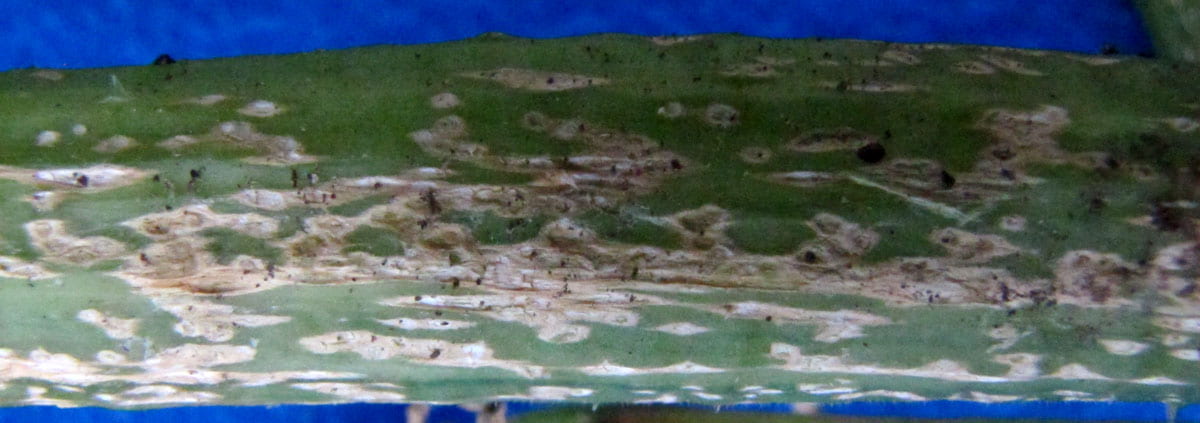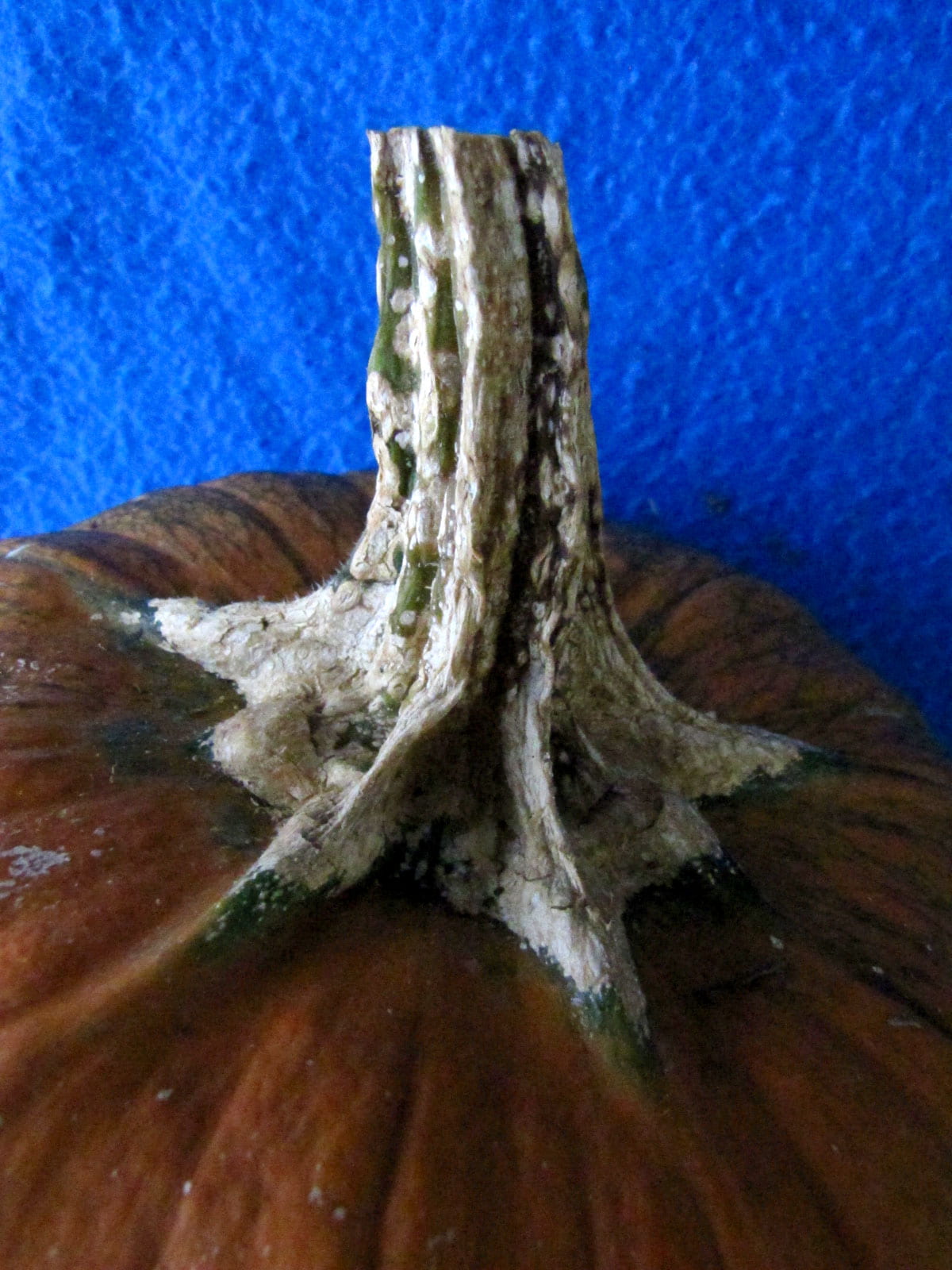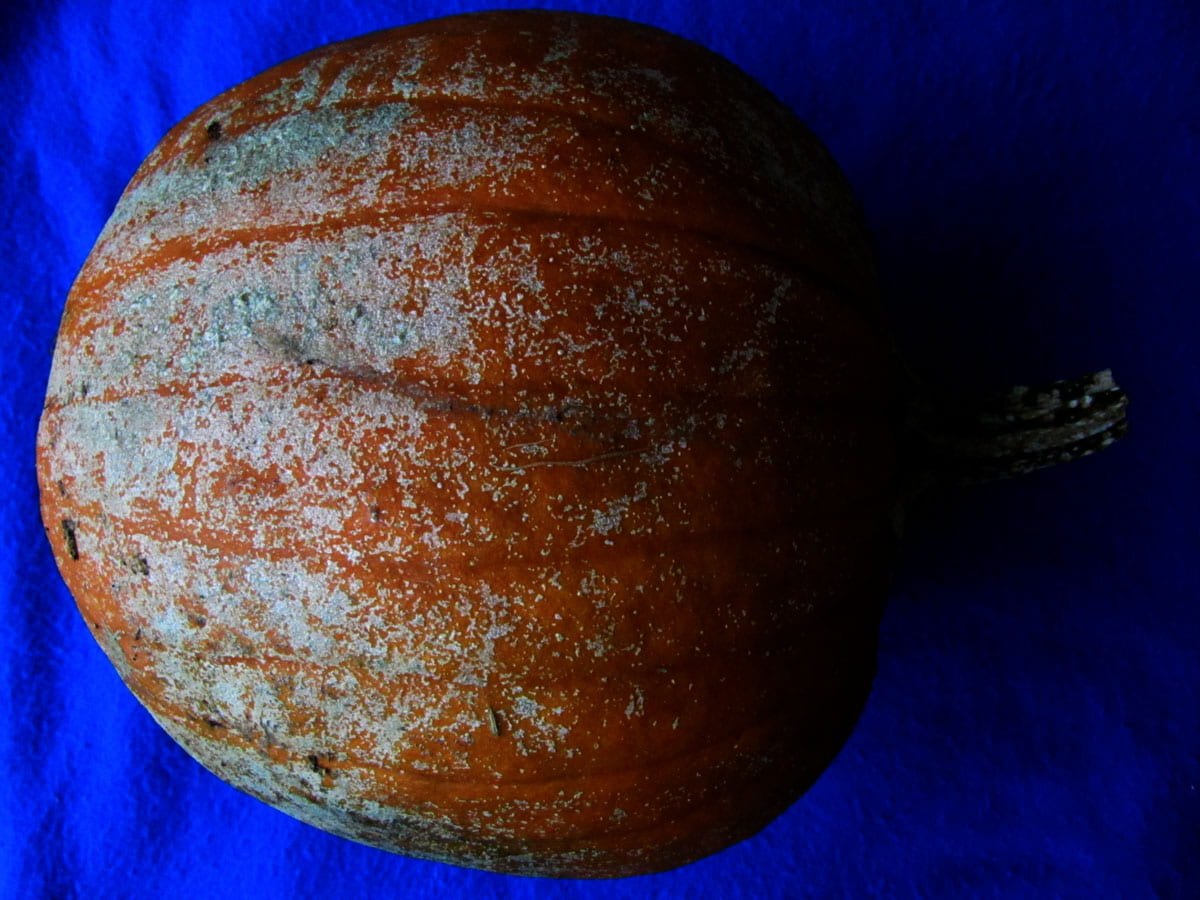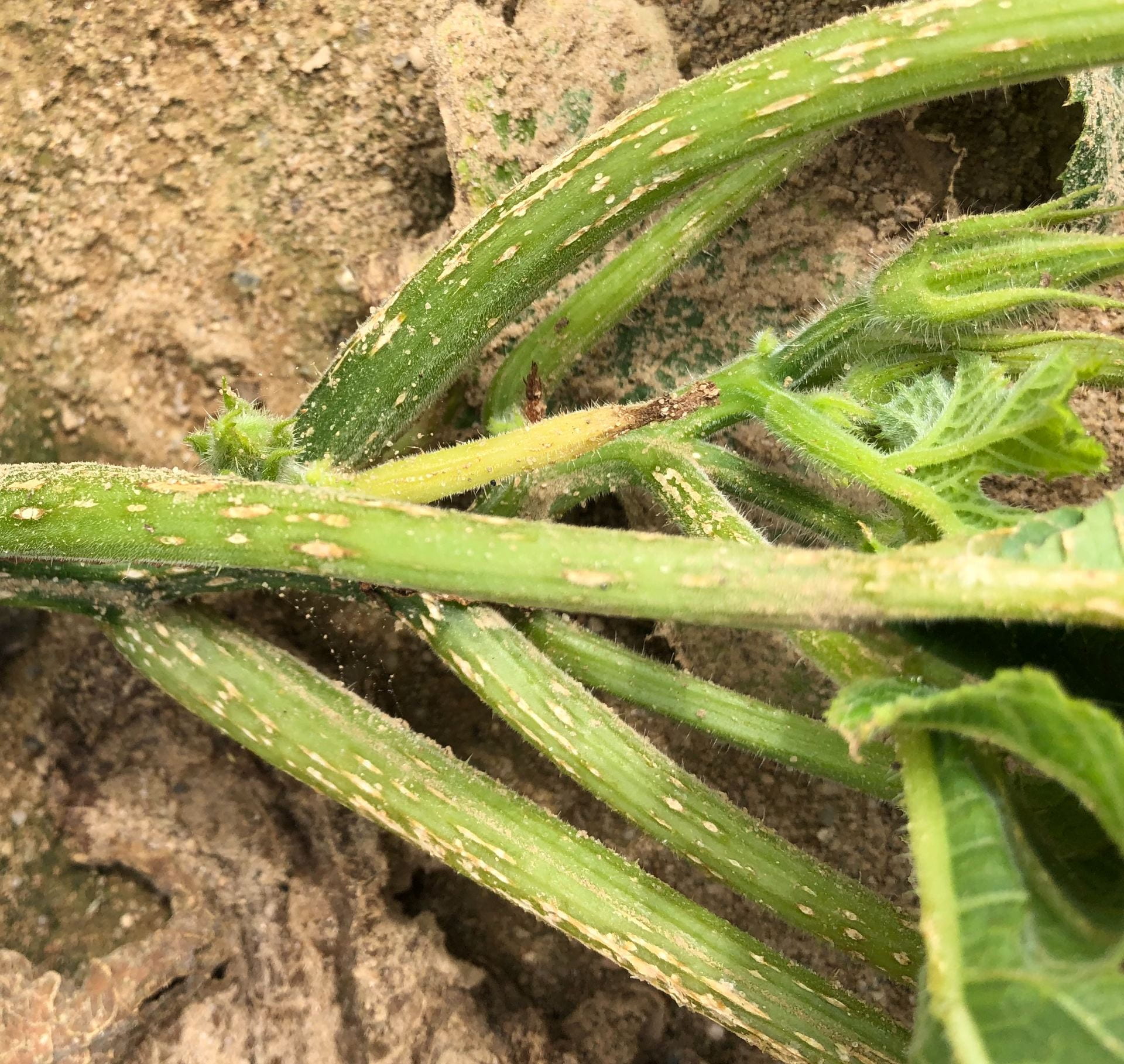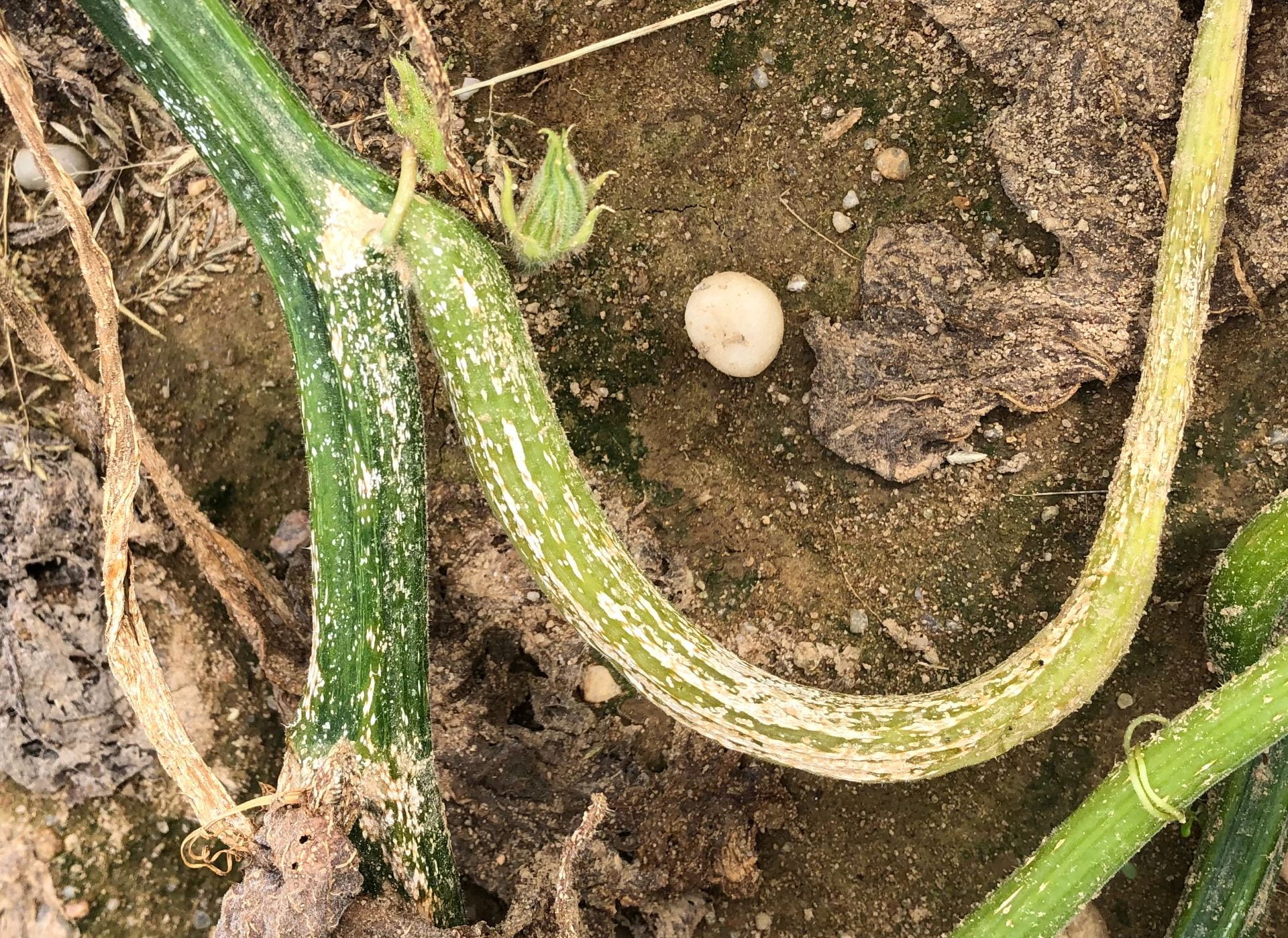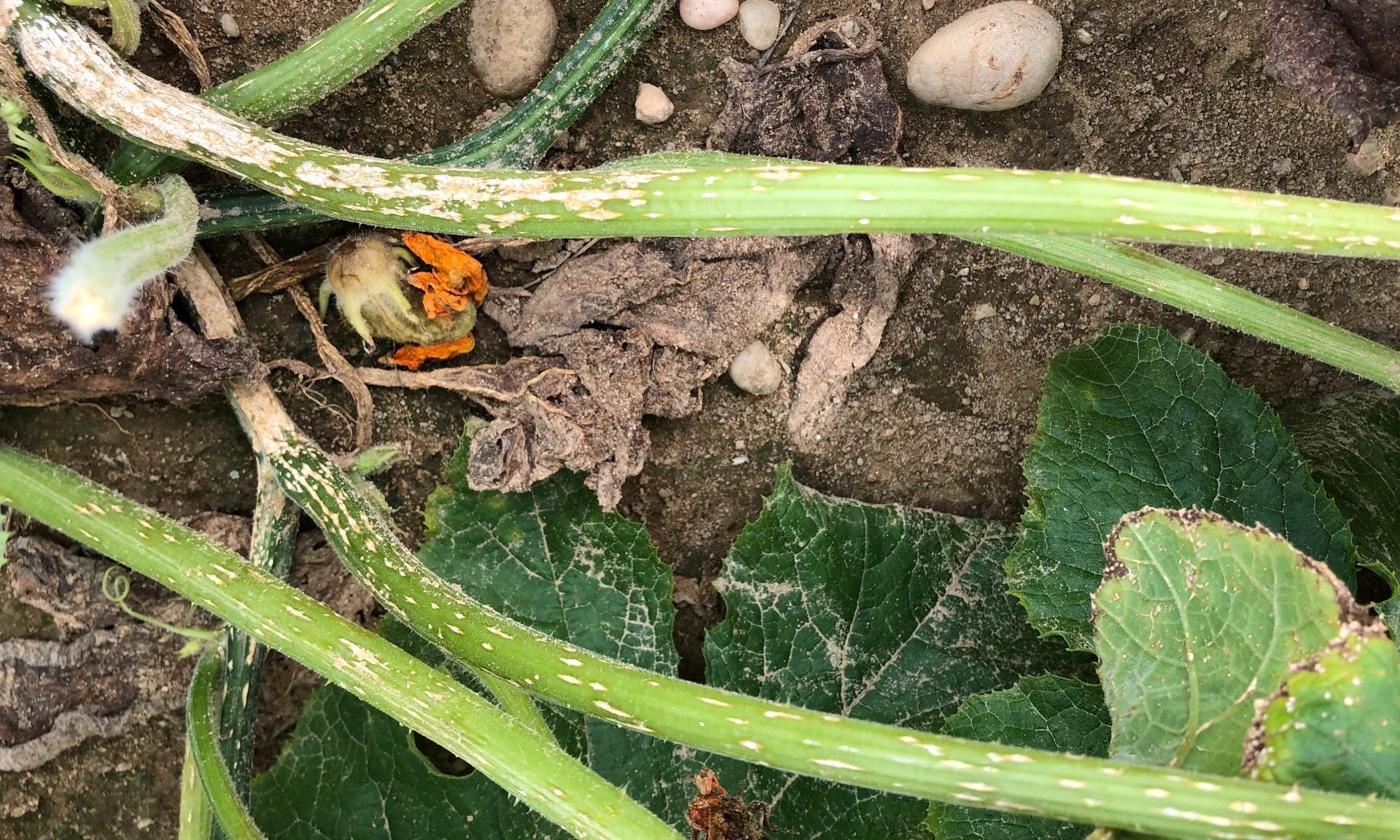Updated July 2023
This fungal disease, which primarily affects pumpkin and zucchini, has been increasing in importance on LI, upstate NY, and elsewhere in the Northeast region. It is a relatively new disease first seen in the U.S. in the 1980s.
Characteristic symptoms are small, white, elliptical to diamond-shaped spots. They form on stems, petioles, fruit stems, fruit, and most distinctively on leaf veins, especially evident on the leaf underside. This disease can be easily missed until it becomes severe because symptoms do not develop on the blade portion of the leaf, and the symptoms can be mistaken for physical damage or feeding injury from cucumber beetles.
Rainy weather provides ideal conditions for development of this disease, thus a good time to look for symptoms is 7-10 days afterwards. The pathogen produces spores dispersed by wind and splashing water. It can survive on crop debris in soil.
When conditions are not extremely favorable, this blight reportedly can be effectively managed with fungicides. Labeled products include Bravo, Inspire Super (FRAC 3 + 9), and the QoI (FRAC 11) fungicides: Cabrio, Flint Extra, Quadris, and Quadris Top which also contains the same FRAC 3 ingredient in Inspire Super (Quadris Opti is not labeled for this use). Label restrictions necessitate rotating among the targeted fungicides. QoI fungicides must be applied in alternation with other fungicides. QoI fungicides are recommended applied in alternation with Inspire Super. Note QoI fungicides are no longer effective for powdery mildew due to fungicide resistance; thus when both diseases are occurring, also apply another fungicide for powdery mildew such as Vivando. Inspire Super can be applied 5 times to a crop with no more than 2 consecutive applications. Inspire Super was one of the 2 most effective products, providing 68% control based on % fruit with symptoms on handles, in an experiment evaluating fungicides for Plectosporium blight and powdery mildew in pumpkin conducted in OH in 2021 (PDMR 16:V079). The numerically most effective product (Merivon Xemium; FRAC 7 + 12) is not labeled for this use or permitted used on LI. Other products tested that were not effective are labeled for powdery mildew not Plectosporium blight. Inspire Super exhibited good efficacy for powdery mildew on the lower surface of leaves (75%), but was not as effective as Procure, another FRAC 3 fungicide (97%). QoI fungicides have provided good control in other evaluations.
For more information and historical perspective see: Plectosporium blight article written in early 2000s shortly after this disease was first found in the Northeast.
Following images were taken on 6 September 2011.
Close up of lesion
Leaf
Petiole
Handle
Fruit
Fruit close-up
Symptoms on pumpkin fruit and stem. 5 November 2004
Symptoms on upper and lower leaf surface of pumpkin leaf. 29 August 2012
Following taken August 2015 in Kingston, N.Y.
Infection of young leaves can cause them to be distorted which could be mistaken for virus infection.
Following images were taken on 1 September 2020 by Sandy Menasha, Vegetable Specialist Cornell Cooperative Extension of Suffolk County, in a research field with no history of Plectosporium blight. A tropical storm on 4 August may have moved the pathogen in wind-driven rain longer distance than is typical, as well as providing wet conditions favorable for infection for an extended period.



